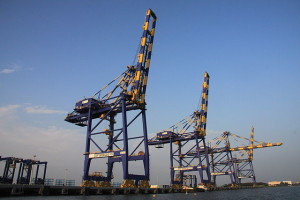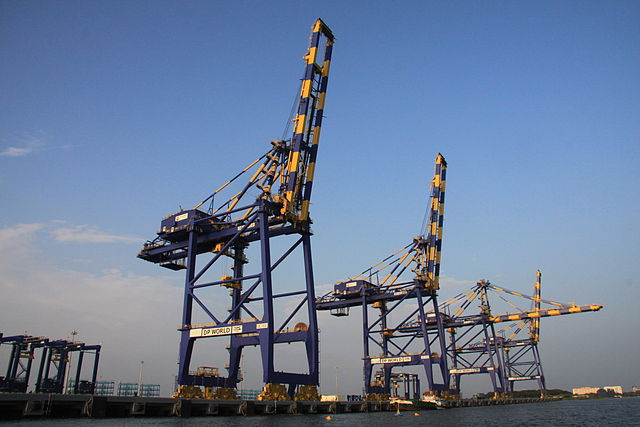 The move toward port automation is on the rise, based on a new market survey of global container port equipment deliveries in 2014 released by an international association of companies in the port equipment and technology sectors.
The move toward port automation is on the rise, based on a new market survey of global container port equipment deliveries in 2014 released by an international association of companies in the port equipment and technology sectors.
The Port Equipment Manufacturers Association (PEMA) survey is divided into three main equipment areas: ship-to-shore (STS) container cranes, yard container cranes, and mobile port handling equipment, covering reach stackers, FLTs and terminal tractors.
On global ship-to-shore (STS) container crane deliveries, these increased by 40% in 2014 from the previous year, with a total of 233 cranes being delivered. Other Asia (Asia excluding China) was the destination for the largest number of STS cranes with 71 deliveries. Europe was slightly up on 2013 with 48 deliveries, including 18 to Turkey. Latin America received 32 cranes, including nine to Colombia, followed by Brazil and Mexico with five each.
A total of 790 yard container cranes were delivered in 2014. These included 507 rubber-tired gantry cranes (RTGs), a slight decline compared to 2013. But deliveries of rail-mounted gantry (RMG) cranes in 2014 went up by 44% to 283 compared to 2013—the largest annual total since 2007, said PEMA.
Europe and Other Asia received most of the RMGs, with 99 to Europe, down from 111 in 2013, and 90 to Other Asia, a dramatic increase from the five RMGs delivered to Other Asia in 2013. RMG deliveries in 2014 included one order of 72 cranes to Singapore.
Of the 99 RMGs delivered to Europe, 63 were specifically identified as automated stacking cranes (ASCs), which were delivered to three terminals: 20 to London Gateway, 32 to Rotterdam World Gateway, and 11 to ECT Delta Rotterdam. There were also 30 ASCs delivered to North America and 20 to Australia.
“The increase in ASC deliveries is a firm indicator of the increasing trend towards terminal automation,” observed PEMA.
Of the total 507 RTGs delivered, 125 cranes (25%) were identified as e-RTGs or variants of e-RTG, powered by electricity rather than diesel to reduce emissions and fossil fuel usage. Of these, 61 were delivered to Europe, 34 to Other Asia, and 24 to Latin America. In 2013, manufacturers contributing to the survey only identified 11% of deliveries as e-RTGs or variants.
Reach stacker volumes were down 3% compared with 2013, from 1,324 to 1,288 deliveries. There was a small decline to Europe, North America, and Latin America, and increases to China, Indian sub-Continent, Other Asia, Middle East, and Africa, but a significant drop in Australia Pacific deliveries from 91 to 37 units.
Laden FLTs were up by 34%, from 146 in 2013 to 194 in 2014. This is some way back to pre-recession numbers but still FLTs have lost market share to reach stackers as the machine of choice for most laden container handling.
Empty FLTs showed just a 1% increase over 2013, from 671 to 679 units.
Meanwhile 4×2 terminal tractor deliveries increased 22% over 2013, from 1,596 units to 1,947. For regulatory reasons, the survey excludes tractor deliveries in North America, which is by far the biggest single market for this equipment type.
Photo: Bharat S Raj





